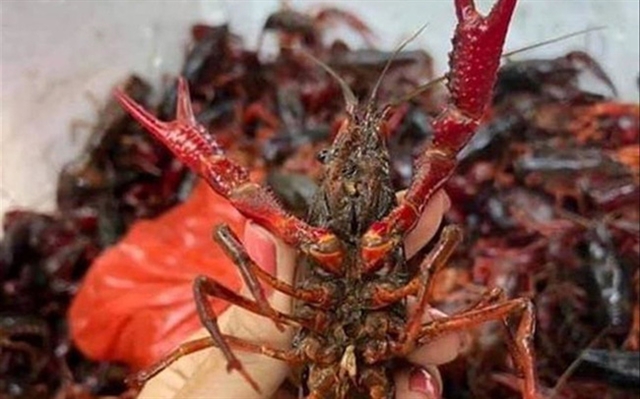 Society
Society


|
| The Market Watchdog Department said it would tighten inspections along northern border provinces to prevent the import of banned red-claw crayfish into Việt Nam.— Photo cafef.vn |
In an urgent message, head of the department Trần Hữu Linh instructed officials in Lạng Sơn, Lào Cai, Cao Bằng and Quảng Ninh to enhance supervision on the trade and consumption of crayfish.
The red-claw crayfish is not on the list of aquatic species eligible for trade in Việt Nam.
He asked authorities to collaborate with local customs and border forces to scan key transport routes to prevent imports of the species.
The department would also inspect supermarkets, seafood stores, restaurants and hotels that served crayfish in big cities such as Hà Nội, HCM City, Đà Nẵng and Hải Phòng. Violators would be fined, Linh said.
It would co-operate with police and inspectors from the departments of aquaculture, agriculture and rural development, and the management boards of local markets to stop the trade.
Colonel Đinh Quang Chính, head of the Lào Cai border gate, told Thanh Niên (Young People) newspaper that border soldiers found and seized 75kg red-claw crayfish hidden in toy boxes last Sunday.
On May 11, 300kg of crayfish were stopped in Lào Cai Province’s Bản Lầu Commune.
Lawyer Trần Đức Phượng from HCM City’s Bar Association said that the trade of crayfish was illegal.
Under the Law on Biodiversity’s Article 7, those who were found to store, transport or trade banned crayfish for commercial purposes would face administrative fines of between VNĐ5-10 million (US$215-430).
The ministry asked the functional agencies to enhance dissemination on the negative impacts of the species on the environment and agricultural production.
Red-craw crayfish is considered an invasive alien species. It could harm the country’s bio-diversity and agricultural production as it can eat both live and dead animals and plants.
Crayfish can also easily carry and spread disease to shrimp, and can burrow in and destroy dykes.
Crayfish is sold for between VNĐ200,000-300,000 ($8.3-12.5) per kilo. It is mainly imported from China and the US. — VNS




